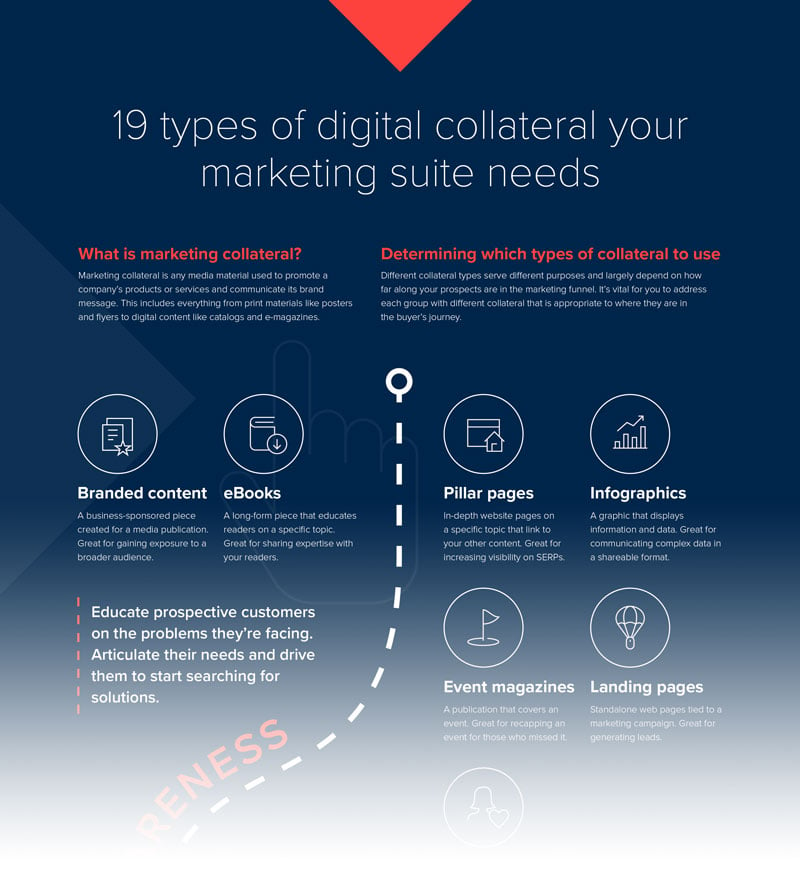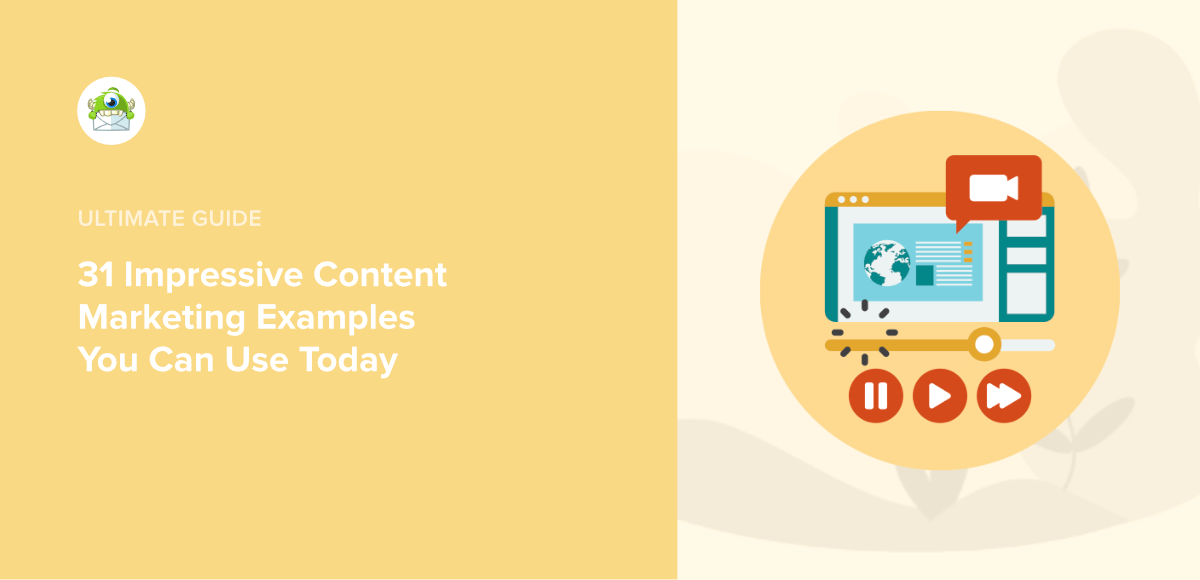Ad Blockers: What They Mean for Marketers in 2024

Ad blockers have become a staple tool for many internet users in recent years, enabling them to avoid digital advertising wherever possible.
As we move further into 2024, the implications of ad blockers are ever-more apparent for marketers and advertisers.
This article explores what ad blockers mean in today's online landscape and how businesses can adapt their strategies accordingly.
Quick Summary
- Ad fatigue: People are bombarded with ads every day, leading to a sense of overwhelm and annoyance.
- Privacy concerns: Many people are uncomfortable with the amount of personal data that is collected and used for targeted advertising.
- Irrelevant ads: Ads that are not relevant to the user's interests or needs are seen as a waste of time and space.
- Disruptive experience: Ads that interrupt the user's experience, such as pop-ups or auto-playing videos, can be frustrating and lead to ad-blocking.
- Alternative revenue models: Some users are willing to pay for ad-free experiences or support content creators through other means, such as Patreon or donations.
The Rise Of Ad Blockers
How They're Changing the Advertising Industry
With over 20 years of experience in the advertising industry, I've witnessed significant changes.
One major shift that has occurred recently is the rise of ad blockers.
In case you're unfamiliar with them, an ad blocker is software designed to prevent ads from appearing on your device.
Why Are Ad Blockers So Popular?
People are fed up with being bombarded by ads everywhere they go online.
Advertisers have become more intrusive than ever before - pop-ups, auto-play videos and interstitials that take up the entire screen!
As a result, people are fighting back by using ad blockers to regain control over their browsing experience.
Ad Blocker Usage Data
- Global usage of ad-blockers increased by 41% between January and June 2024
- Over 600 million devices now use ad blockers worldwide
- Ad-blocking is most popular among younger generations, with 73% of millennials using ad blockers
Ad-blocking is not a trend that's going away anytime soon.Advertisers need to adapt to this new reality and find new ways to reach their target audience.
As the use of ad blockers continues to grow, advertisers must find new ways to reach their target audience.
This means creating more engaging and relevant content that doesn't feel like an intrusion.
It also means exploring new advertising channels, such as influencer marketing and native advertising.
Analogy To Help You Understand
Blocking ads is like putting up a fence around your house. Just as a fence protects your home from unwanted visitors, ad blockers protect internet users from unwanted ads. But why do people feel the need to put up this fence? Well, just as you wouldn't want strangers walking into your home uninvited, internet users don't want ads invading their online experience. Ads can be intrusive, disruptive, and even harmful. They can slow down page load times, track your online behavior, and even spread malware. So, it's no wonder that people are turning to ad blockers in droves. But what does this mean for marketers and advertisers? It means that they need to rethink their approach to advertising. They need to create ads that are relevant, engaging, and non-intrusive. They need to respect the user's experience and provide value in exchange for their attention. Otherwise, they'll find themselves on the wrong side of the fence, unable to reach their target audience. So, if you're a marketer or advertiser, it's time to start thinking like a homeowner. Respect your audience's space, provide value, and build a relationship based on trust. Only then will you be able to break through the fence and connect with your audience in a meaningful way.How Do Ad Blockers Work

The Impact of Ad Blockers on Digital Advertising
With over two decades of experience in the marketing industry, I've witnessed significant changes in how advertisements are consumed.
One major change that has reshaped digital advertising is ad blockers.
What are Ad Blockers?
In simple terms, an ad blocker is software designed to prevent ads from appearing on a website or application.
These tools scan websites and applications before loading them onto your device to identify potential advertisements and block them instantly.
How Do Ad Blockers Work?
Ad blockers use various filters to assess web page elements such as images, text boxes, and tracking codes.
This helps differentiate between content and ads so only relevant information appears for users.
Ad-blocker extensions stop JavaScript requests sent by Ads.
They create lists of advertisement servers' domains containing malicious content.
The tool scans each element on the webpage/application before allowing it through.
It blocks any identified adverts using pre-set rules.
Users have control over which sites/ads get blocked.
Ad blockers have become increasingly popular due to the rise of intrusive and irrelevant ads.
By blocking these ads, users can have a better browsing experience and avoid potential security risks.
However, ad blockers have also had a significant impact on digital advertising.
With fewer ads being seen, businesses have had to find new ways to reach their target audience.
This has led to the rise of native advertising and influencer marketing.
Overall, ad blockers have changed the digital advertising landscape and will continue to do so in the future.
Some Interesting Opinions
1. Ad-blockers are a blessing in disguise for marketers.
According to a study by HubSpot, 64% of people find ads annoying and intrusive. By blocking ads, users are telling us what they don't want to see. This gives marketers the opportunity to create better, more relevant ads that people actually want to engage with.2. Ad-blockers are a wake-up call for advertisers.
A study by eMarketer found that ad-blocker usage is highest among millennials, with 73% of them using ad-blockers. This means that advertisers need to rethink their strategies and create ads that resonate with this demographic. Otherwise, they risk losing a significant portion of their audience.3. Ad-blockers are a symptom of a larger problem.
According to a study by Nielsen, only 33% of consumers trust ads. This lack of trust is a result of years of deceptive advertising practices. Ad-blockers are a symptom of this larger problem and advertisers need to work on rebuilding trust with their audience.4. Ad-blockers are a sign of the times.
A study by PageFair found that ad-blocker usage grew by 30% in 2022. This shows that people are becoming more aware of their online privacy and are taking steps to protect themselves. Advertisers need to respect this and find new ways to reach their audience without invading their privacy.5. Ad-blockers are a necessary evil.
According to a study by GlobalWebIndex, 47% of people use ad-blockers to improve their browsing experience. While this may be frustrating for advertisers, it's important to remember that the user experience should always come first. Ad-blockers are a necessary evil that help ensure a better online experience for everyone.The Impact Of Ad Blocking On Marketers
The Impact of Ad Blocking on Marketers
Ad blockers have caused frustration for marketers in recent years.
These tools pose a significant challenge for us as we strive to promote our message without being intrusive or annoying.
Experts estimate that two-thirds of mobile device users worldwide use some form of ad-blocking software when browsing online content.
This is concerning news for marketers who rely heavily on digital ads campaigns.
Key Points
- We must come up with creative marketing ideas beyond conventional banner ads
- There's increasing pressure on publishers and advertisers alike to deliver tailored content
- Personalization can help combat the effects of ad-blockers by making advertisements more relevant to individual consumers' interests
- Native advertising - where sponsored posts blend seamlessly into editorial content - offers an effective alternative approach
- Marketing teams should focus their efforts on building relationships with customers through social media engagement rather than relying solely upon traditional forms of advertising
Personalization can help combat the effects of ad-blockers by making advertisements more relevant to individual consumers' interests.
As marketers, we must adapt to the changing landscape of digital advertising.
We can no longer rely solely on conventional banner ads to reach our target audience.
Instead, we must come up with creative marketing ideas that engage our audience and provide value.
I use AtOnce's AI USP generator to get new ideas for ads & content:
Native advertising - where sponsored posts blend seamlessly into editorial content - offers an effective alternative approach.
One effective alternative approach is native advertising.
This type of advertising blends seamlessly into editorial content, making it less intrusive and more engaging for the audience.
By delivering tailored content, we can combat the effects of ad-blockers and provide value to our customers.
Marketing teams should focus their efforts on building relationships with customers through social media engagement.
Changes In Advertising Strategies

Adapting Advertising Strategies in the Age of Ad-Blockers
As a marketer in 2024, I've witnessed how ad-blockers have revolutionized the industry.
It's no longer enough to create excellent content; you must also ensure it's visible and relevant by targeting your audience more specifically than ever before.
To adapt to this shift, advertising strategies are moving away from broad-based campaigns towards targeted ones.
By analyzing data and consumer insights, we can identify which customers are most interested in our products or services and tailor our ads accordingly.
This helps us cut through competing noise while reaching consumers who are likely to convert.
Targeted campaigns will be essential for success.
Brands need engaging content that appeals directly to their target market.
By creating content that resonates with their audience, brands can build trust and loyalty with their customers.
Example where I used AtOnce's AI content generator to write high-quality content: blog posts, emails & ads:
Marketers should focus on building relationships with potential customers instead of just selling them something.
Personalization is crucial.
By using customer data wisely but respectfully, marketers can create a more personalized experience for their customers.
This can lead to increased engagement and conversions.
Personalization is crucial - use customer data wisely but respectfully!
Experimentation is necessary as new technologies emerge.
Marketers should stay up-to-date with the latest trends and be willing to try new things to stay ahead of the competition.
Experimentation is necessary as new technologies emerge so stay up-to-date!
My Experience: The Real Problems
1. Advertisers are to blame for ad-blocking, not consumers.
According to a survey by HubSpot, 91% of respondents said they would consider using an ad-blocker if they felt overwhelmed by ads. Advertisers need to focus on creating relevant and engaging content instead of bombarding consumers with irrelevant ads.2. Ad-blockers are a symptom of a broken advertising industry.
A study by PageFair found that ad-blocker usage increased by 30% in 2022, with 27% of internet users in the US using ad-blockers. The industry needs to address issues such as ad fraud, intrusive ads, and lack of transparency to regain consumer trust.3. Advertisers need to prioritize user experience over profits.
A study by Accenture found that 60% of consumers are willing to pay more for a better experience. Advertisers need to focus on creating ads that enhance the user experience instead of interrupting it. This will lead to higher engagement and ultimately, higher profits.4. Advertisers need to embrace new technologies and platforms.
A study by eMarketer found that 90% of Gen Z consumers use ad-blockers. Advertisers need to adapt to new technologies and platforms such as social media, influencer marketing, and native advertising to reach younger audiences.5. Advertisers need to be more transparent about data collection and usage.
A study by Pew Research Center found that 79% of Americans are concerned about the way their data is being used by companies. Advertisers need to be more transparent about data collection and usage to build trust with consumers and reduce ad-blocker usage.Innovations In Targeting Technologies

The Importance of Targeting Technologies in Modern Marketing
Targeting technologies have always been crucial for marketers, but with the rise of ad-blockers, they are now more important than ever before.
Fortunately, recent advances in AI and Machine Learning have led to revolutionary changes that allow us to deliver laser-targeted ads while still respecting users' privacy.
Predictive Analytics: Personalizing Content for Higher Conversion Rates
One of the latest trends in targeting technology is Predictive Analytics.
This involves using data from various sources such as social media activity and search engine queries to predict what type of content or products might interest a user at any given moment.
Example of me using AtOnce's AI SEO writer to generate high-quality articles that actually rank in Google:
By doing so, advertisers can target specific demographics accurately and provide personalized content they're likely to appreciate - greatly increasing conversion rates.
- Predictive Analytics uses data from various sources to predict user interests
- Allows for highly targeted ads based on individual preferences
- Greatly increases conversion rates
Interest-Based Advertising: Hitting Consumers Where it Counts
Interest-based advertising takes Predictive Analytics one step further by hitting consumers where it counts: their interests!
With predictive analytics powering our campaigns, we can create highly targeted ads based on individual preferences rather than just demographic information alone.
- Interest-based advertising targets consumers based on their interests
- Uses Predictive Analytics to create highly targeted ads
- Increases the effectiveness of ad campaigns
Programmatic Advertising: Automating the Buying Process
Another game-changing technology for marketers is programmatic advertising which automates the buying process for digital advertisements through real-time bidding (RTB).
Programmatic allows us to reach audiences across multiple channels simultaneously without having manual intervention every time an impression needs purchasing – saving both time & money!
You can use AtOnce's multi channel communication software to save hours & keep everything in 1 tab:
- Programmatic advertising automates the buying process for digital ads
- Uses real-time bidding to reach audiences across multiple channels
- Saves time and money for marketers
Predictive Analytics combined with Interest-Based Advertising & Programmatic Buying has revolutionized how we approach marketing today- allowing brands unprecedented access into consumer behavior patterns resulting in higher ROI's when executed correctly!
Native Advertising As A Solution

Why Native Advertising is the Solution to Ad-Blockers
Ad-blockers can be frustrating for marketers, but we can't just sit back and let our ads go unnoticed.
One solution that's gaining popularity is native advertising.
Native advertising involves seamlessly integrating ads into website or app content to blend in with surroundings and avoid disrupting users' experiences.
From sponsored articles on news sites to promoted social media posts on platforms like Facebook and Instagram, there are many ways marketers can use native ads creatively while maintaining authenticity.
Here's an example where I've used AtOnce's AI Facebook post generator to get more engagement and leads:
Native advertising is the solution to ad-blockers because it blends in with content and avoids disrupting users' experiences.
5 Key Benefits of Using Native Advertising
- Less intrusive: Native ads are less intrusive than traditional display ads.
- Higher engagement rates: Native ads often result in higher engagement rates because they blend well with content.
- Improved brand awareness: Native ads increase visibility within relevant contexts, improving brand awareness.
- Increased trust: Consumers view native ads as less salesy compared to other forms of marketing, increasing trust.
- Improved ROI: Customers tend to engage more and convert at higher rates when exposed to natively integrated advertisements, improving ROI.
Native advertising offers many benefits, including increased engagement rates, improved brand awareness, increased trust, and improved ROI.
Native advertising is a solution that marketers can use to combat ad-blockers.
By blending in with content, native ads are less intrusive and more likely to engage users.
Additionally, native ads can improve brand awareness, increase trust, and improve ROI.
My Personal Insights
As the founder of AtOnce, I have had my fair share of experiences with online ads. One particular incident stands out in my mind. One day, I was browsing a popular news website when I was bombarded with pop-up ads. I tried to close them, but they kept reappearing. Frustrated, I decided to install an ad blocker. As a marketer and advertiser, this experience made me realize just how much people dislike intrusive ads. It also made me realize the importance of creating ads that are not only visually appealing but also non-intrusive. At AtOnce, we understand the importance of creating a positive user experience. Our AI-powered writing and customer service tool helps businesses create personalized and engaging content that resonates with their target audience. By using AtOnce, businesses can create ads that are not only visually appealing but also non-intrusive. This means that users are more likely to engage with the ad and less likely to block it. As marketers and advertisers, it's important to understand why people block ads and what it means for our industry. By creating ads that are non-intrusive and personalized, we can create a positive user experience and ultimately drive better results for our clients. At AtOnce, we are committed to helping businesses create engaging and non-intrusive ads that resonate with their target audience. Contact us today to learn more about how we can help your business succeed.Branded Content Vs Display Ads: Which One Works Better

Display Ads vs Branded Content: Which is Better?
As a marketer, capturing my audience's attention is always a top priority.
Two popular online advertising methods are Display Ads and Branded Content.
But which one is better?
Display Ads
Display Ads have been around for some time now in various formats such as banners, images or videos that appear on websites or social media platforms.
However, with Ad Blockers becoming more common among users in 2024, not everyone who visits a website may see them.
Branded Content
Branded Content is usually created through blog posts or articles written by influencers promoting your brand indirectly without being too pushy about sales pitches.
The idea behind this marketing form is to inform and educate followers about what your company has to offer rather than directly promoting products/services.
Branded content tends to be more successful because it provides value beyond just selling something; it educates consumers while also building trust between brands and their audiences.
Additionally, display ads can come across as intrusive whereas branded content feels like an organic part of someone’s feed.
For example, if you’re scrolling through Instagram looking at pictures from friends when suddenly there’s an ad interrupting everything - that doesn't feel natural!
However, when you're reading an article related to topics you enjoy (like cooking) then seeing sponsored recipes within makes sense since they add value instead of detracting from user experience.
While both display ads and branded content have their place in digital marketing strategies- if given the choice between these two options?
Go with branded content every time!
The Role Of Social Media Advertising

The Importance of Social Media Advertising in 2024
Social media advertising has become one of the most effective ways to reach potential customers and engage with existing ones.
Its role has evolved from being just an awareness tool to becoming a significant driver for sales.
Targeting Specific Audiences
Social media platforms such as Facebook, Instagram, Twitter, or LinkedIn offer various types of advertisements that help marketers target specific audiences based on demographics like age, location, interests, or behaviors.
With advanced targeting tools now available through these platforms, advertisers can ensure their message gets seen by individuals who are likely interested in what they have to offer.
Key Points About Social Media Advertising
Social ads produce higher conversion rates than other online channels.
Personalized marketing is more successful when using data collected from users' interactions with brands on social networks.
The use of video content increases engagement levels significantly compared to static images alone.
Influencer partnerships provide access not only into new markets but also increased credibility among consumers due largely because influencers already have established trust within those communities.
A/B testing allows you to test different ad formats against each other so you can optimize your campaigns accordingly.
Influencer Marketing As An Alternative To Traditional Ads

Influencer Marketing: A Powerful Alternative to Traditional Ads
As a marketing expert in the age of ad-blockers, I've seen influencer marketing gain popularity as an effective alternative.
This strategy involves collaborating with social media personalities or influencers who have large followings on platforms like Instagram, YouTube, and TikTok to reach target audiences without relying solely on traditional ads.
Influencer partnerships can be highly successful because consumers are more likely to trust recommendations from people they admire rather than generic ads pushed by companies.
However, before jumping into an influencer partnership, it's crucial to understand your target audience and identify the right influencer whose following aligns with your desired demographic.
Choose an influencer based on engagement level instead of follower count alone.
5 Key Factors to Consider When Choosing an Influencer
- Engagement Level: Choose an influencer based on engagement level instead of follower count alone.
- Values Alignment: Select someone who embodies values similar to those of your brand.
- Relevance and Authenticity: Ensure their content is relevant and authentic for both their followers and your brand message.
- Clear Goals: Set clear goals for what you want out of this collaboration- whether it’s increased sales or greater awareness among new demographics – so everyone involved knows exactly what success looks like!
- Data Analytics: Use data analytics tools such as Google Analytics or Hootsuite Insights which provide insights about how well campaigns perform across different channels over time; these metrics help measure ROI (return-on-investment) accurately while also providing valuable feedback regarding future strategies.
Influencer marketing can be a powerful tool for reaching your target audience, but it's important to choose the right influencer and set clear goals for success.
Interactive And Immersive Ad Formats For Increased Engagement

Interactive and Immersive Ad Formats: A Promising Solution to Combat Ad Blockers
As a marketing industry expert, I believe that interactive and immersive ad formats are the way to go to combat the impact of ad blockers.
These types of ads prioritize user engagement by providing entertaining or informative experiences that encourage users to interact with their content.
Interactive ads can take various forms such as:
- Quizzes
- Polls
- Games
- Mini-videos within videos
- Surveys
- Augmented reality experiences
In contrast to traditional banner ads which visitors often ignore completely due to being trained not to pay attention, interactive ad formats make users engage directly with your brand.
Interactive Ad Formats make users engage directly with your brand.
Five Quick Tips to Create Memorable Interactive Advertising Campaigns
Here are five quick tips to create memorable interactive advertising campaigns for your business:
- Utilize gamification techniques: Gamifying your advertising is an excellent way of grabbing attention while making real connections between customers and brands.
- Personalization tactics: Use location data contextually.
- Keep it simple: Avoid overwhelming audiences with too much information at once; instead, focus on one clear message per campaign.
- Make it shareable: Encourage social sharing through incentives like discounts or exclusive offers available only when shared via social media platforms.
- Measure success metrics regularly: So you can adjust strategies accordingly based on what works best for each audience segment.
Interactive advertising campaigns should be memorable and engaging.
By following these tips, you can create interactive advertising campaigns that are memorable, engaging, and effective in reaching your target audience.
Legal Challenges Surrounding Ad Blocking Technology
Legal Challenges Surrounding Ad-Blocking Technology
Ad-blockers have the potential to disrupt traditional online advertising, but their use poses legal challenges.
Some marketers argue that ad-blocking technology violates copyright laws and interferes with sites' ability to monetize traffic.
However, court rulings so far have not been in their favor.
“Court rulings do not support arguments by marketers”
One interesting case involves publishers suing Samsung for including a built-in ad blocker on its mobile browser.
The publishers claimed this violated competition rules since Samsung was blocking ads while still profiting from licensing fees on internet usage.
But courts ruled against them, stating it was within Samsung's right as an OEM (Original Equipment Manufacturer) to include such software.
“Publishers may face difficulty challenging manufacturers who incorporate ad blockers into devices or browsers”
5 Key Takeaways
- Court rulings do not support arguments by marketers.
- Publishers may face difficulty challenging manufacturers who incorporate ad blockers into devices or browsers.
- Websites can legally block users who employ ad-blockers if they choose
- Lawsuits related to anti-ad-blocking measures will likely continue due to differing interpretations of existing regulations
- It is important for advertisers and website owners alike stay up-to-date with changes in legislation around these issues
“It is important for advertisers and website owners alike stay up-to-date with changes in legislation around these issues.”
The Future Outlook For Digital Advertising
The Future of Digital Advertising
In 2024, the future of digital advertising is set to evolve rapidly.
With advancements in technology and AI, we can expect more personalized ads that cater directly to individual consumers' interests.
Another trend on the rise is influencer marketing through social media platforms.
As a trusted authority figure or leader, influencers have already become big business and will continue to gain popularity over time.
Personalization will be at an all-time high.Social media influencers are becoming increasingly important.
Brands must focus on building trust with their audience.
Video content remains king when it comes to engagement rates.
Augmented reality (AR), virtual reality (VR), and mixed reality (MR) technologies offer new opportunities for immersive ad experiences.
Personalization is Key
Personalization is the future of digital advertising.
Brands must tailor their messaging to individual consumers' interests to increase engagement rates.
The Power of Influencers
Social media influencers are becoming increasingly important in the world of digital advertising.
Brands must partner with credible sources to build trust with their target audiences.
Video Content Reigns Supreme
Video content remains king when it comes to engagement rates.
Brands must prioritize creating high-quality video content to capture their audience's attention.
New Opportunities with AR/VR/MR
Augmented reality (AR), virtual reality (VR), and mixed reality (MR) technologies offer new opportunities for immersive ad experiences.
Brands must explore these technologies to create unique user experiences.
These trends represent significant shifts within digital advertising that require careful consideration from marketers looking towards long-term success.
Overall, these trends represent significant shifts within digital advertising that require careful consideration from marketers looking towards long-term success.
Personalization, influencer marketing, video content, and AR/VR/MR technologies are the future of digital advertising.
Final Takeaways
As a marketer, I've always been fascinated by the psychology behind why people block ads. It's a topic that's been debated for years, and one that's only become more relevant as ad-blocking technology has become more widespread. Personally, I used to be one of those people who blocked ads. I found them annoying, intrusive, and often irrelevant to my interests. But as I started working in the marketing industry, I began to see things from a different perspective. I realized that ads are an essential part of the online ecosystem. They help fund the content we consume, and they allow businesses to reach their target audience in a cost-effective way. But despite their importance, many people still choose to block them. So, what does this mean for marketers and advertisers? It means that we need to be more creative and strategic in the way we approach advertising. We need to create ads that are engaging, relevant, and non-intrusive. We need to use data and AI to target our ads to the right people at the right time. That's where AtOnce comes in. Our AI writing and customer service tool helps businesses create personalized, engaging content that resonates with their target audience. By using AI to analyze data and customer behavior, we can help businesses create ads that are more effective and less likely to be blocked. At the end of the day, the key to successful advertising is to put the customer first. We need to create ads that add value to their online experience, rather than detract from it. With the right approach and the right tools, we can create a win-win situation for both businesses and consumers.- Never struggle with writer's block again.
- Improve your writing skills with ease.
- Create copy that sells in minutes.
- Generate creative blog post ideas in seconds
- Create engaging product descriptions with ease
- Craft effective email subject lines in minutes
- Write Facebook and Google ads that convert
Upgrade your writing game today.
Join the thousands of happy AtOnce users and:- Save time and increase productivity
- Eliminate writer's block and frustration
- Create high-quality content that sells
Try AtOnce today!
What are ad blockers?
Ad blockers are software programs that prevent ads from being displayed on websites or mobile apps. They work by either blocking the ad from being downloaded or by hiding it from view.
How do ad blockers affect marketers?
Ad blockers can significantly impact marketers by reducing the number of impressions and clicks on their ads. This can lead to lower conversion rates and ultimately, lower revenue. Marketers may need to adjust their strategies to reach their target audience through alternative channels.
What can marketers do to overcome ad blockers?
Marketers can try to overcome ad blockers by creating more engaging and relevant ads that users are less likely to want to block. They can also explore alternative advertising channels such as influencer marketing, native advertising, and sponsored content. Additionally, marketers can work with ad blocker companies to ensure their ads are whitelisted and still displayed to users who have ad blockers installed.
